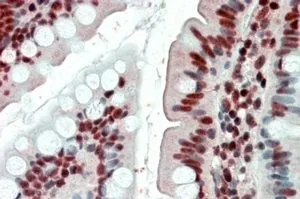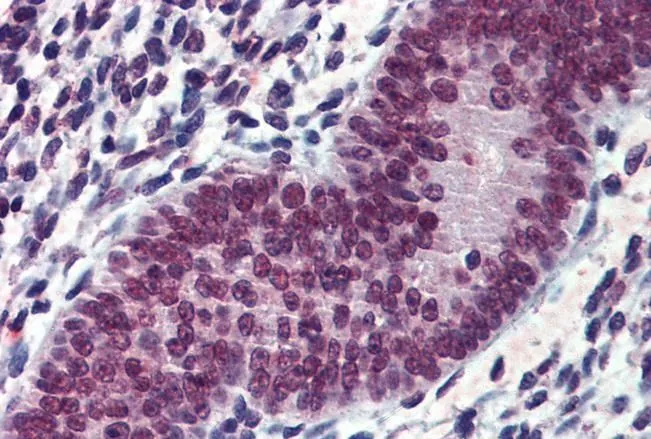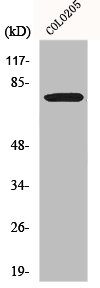
WB analysis of HeLa nuclear lysate using GTX88471 EWSR1 antibody, Internal. Dilution : 0.3microg/ml Loading : 35microg protein in RIPA buffer
EWSR1 antibody, Internal
GTX88471
ApplicationsWestern Blot, ImmunoHistoChemistry, ImmunoHistoChemistry Paraffin
Product group Antibodies
TargetEWSR1
Overview
- SupplierGeneTex
- Product NameEWSR1 antibody, Internal
- Delivery Days Customer9
- Application Supplier NoteWB: 0.3-1microg/ml. *Optimal dilutions/concentrations should be determined by the researcher.Not tested in other applications.
- ApplicationsWestern Blot, ImmunoHistoChemistry, ImmunoHistoChemistry Paraffin
- CertificationResearch Use Only
- ClonalityPolyclonal
- Concentration0.50 mg/ml
- ConjugateUnconjugated
- Gene ID2130
- Target nameEWSR1
- Target descriptionEWS RNA binding protein 1
- Target synonymsEWS, EWS-FLI1, RNA-binding protein EWS, Ewing sarcoma breakpoint region 1, Ewings sarcoma EWS-Fli1 (type 1) oncogene
- HostGoat
- IsotypeIgG
- Protein IDQ01844
- Protein NameRNA-binding protein EWS
- Scientific DescriptionThis gene encodes a multifunctional protein that is involved in various cellular processes, including gene expression, cell signaling, and RNA processing and transport. The protein includes an N-terminal transcriptional activation domain and a C-terminal RNA-binding domain. Chromosomal translocations between this gene and various genes encoding transcription factors result in the production of chimeric proteins that are involved in tumorigenesis. These chimeric proteins usually consist of the N-terminal transcriptional activation domain of this protein fused to the C-terminal DNA-binding domain of the transcription factor protein. Mutations in this gene, specifically a t(11;22)(q24;q12) translocation, are known to cause Ewing sarcoma as well as neuroectodermal and various other tumors. Alternative splicing of this gene results in multiple transcript variants. Related pseudogenes have been identified on chromosomes 1 and 14. [provided by RefSeq, Jul 2009]
- Storage Instruction-20°C or -80°C,2°C to 8°C
- UNSPSC12352203







